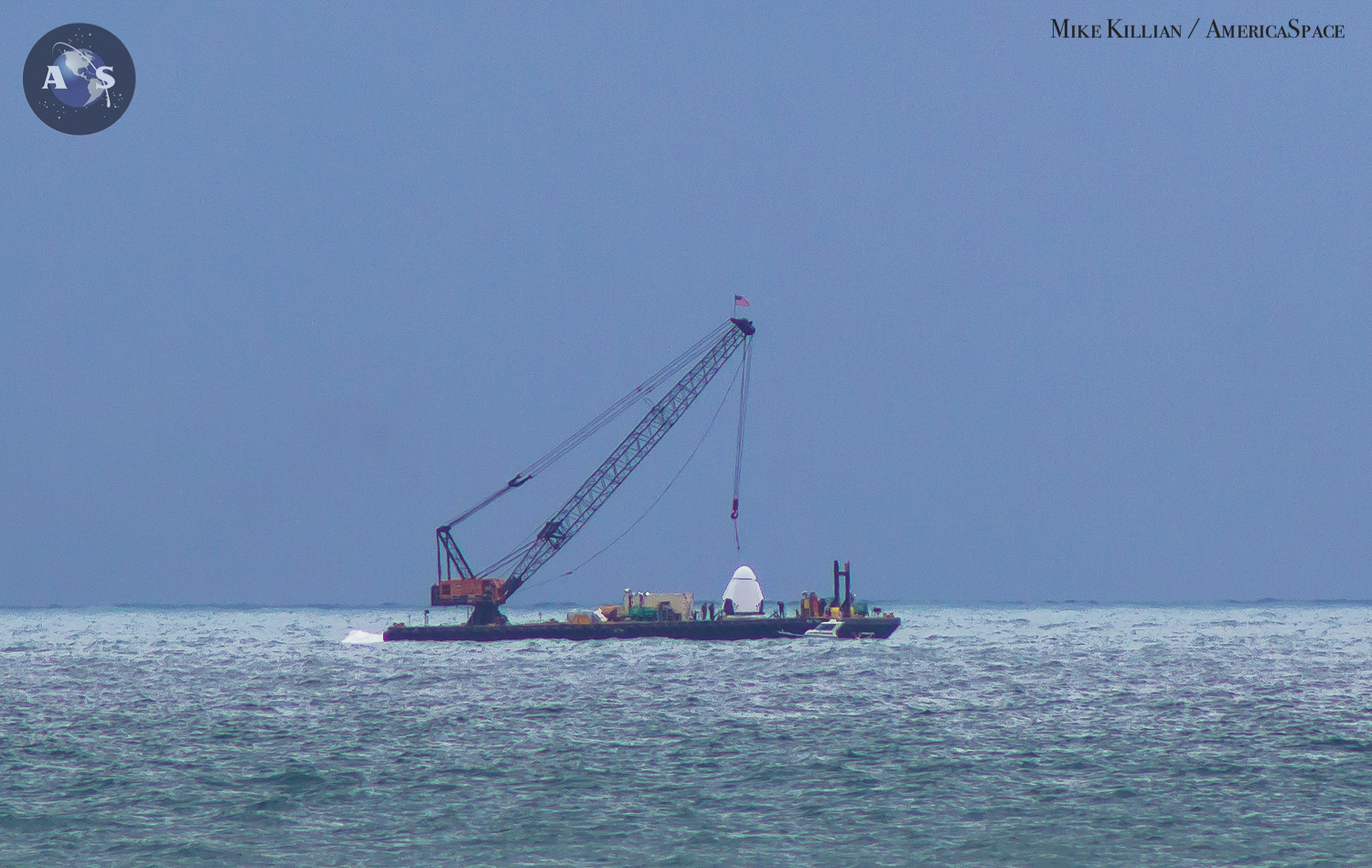
On Sunday afternoon, if weather permits, America will execute its first landing of astronauts in the ocean for almost five decades. Dragon Endeavour crewmen Doug Hurley and Bob Behnken—who launched to the International Space Station (ISS) on 30 May—are due to undock from the sprawling orbital outpost late tomorrow and hit the waters of the Atlantic Ocean mid-afternoon EDT on Sunday, 2 August. Not since the harrowing return of Apollo-Soyuz Test Project (ASTP) crewmen Tom Stafford, Vance Brand and Deke Slayton on 24 July 1975 have U.S. astronauts returned to an oceanic landing; all others alighted on terra firma in the now-retired Space Shuttle or aboard Russia’s Soyuz. Hurley and Behnken will be the 32nd American crew to land in “the drink”, and looking back on those astronauts of yesteryear offers a sobering reminder of the immense hazards involved.
Between the suborbital “hop” of Freedom 7 pilot Al Shepard—America’s first man in space—on 5 May 1961 and the return of the ASTP crew, a total of 43 U.S. astronauts have returned to oceanic landings, with Jim Lovell, Pete Conrad, Tom Stafford and John Young having done so four times. Their splashdowns have run the gamut from picture-perfect normality, right-on-the-money and close to the recovery ship, to emergency landings far from rescue. One astronaut lost his spacecraft entirely, another crew hit the ocean harder than intended after a failed parachute deployment and the men of ASTP were almost asphyxiated by lethal nitrogen tetroxide. Astronauts have hit calm waters and choppy waters in both the Atlantic and Pacific Oceans and whether Navy, Air Force, Marines or civilian, many have gone on to lose their breakfast in the process, including the remnants of a smuggled corned-beef sandwich.
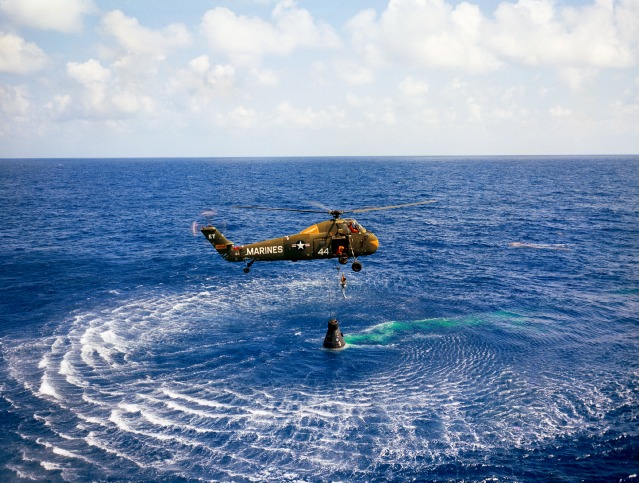
Al Shepard, America’s first man in space, enjoyed a smooth return to the Atlantic after a 15-minute suborbital mission. Parachute deployment during his descent afforded “a reassuring kick in the butt” and the naval aviator described the splashdown itself as no worse than the shove he experienced from the catapult aboard aircraft carriers. Freedom 7 listed over onto its side slightly, but quickly righted itself, and one of the five Marine Air Group 26 rescue helicopters soon snagged it with hook and line. Shepard himself was raised to the helicopter by a padded harness, but was under no illusions as to the danger. A day earlier, on 4 May, fellow aviators Malcolm Ross and Victor Prather had ridden the Navy’s Stratolab high-altitude gondola to 21.5 miles (34.6 km). They returned safely to the ocean, but Prather slipped from the ladder to the waiting helicopter and drowned.
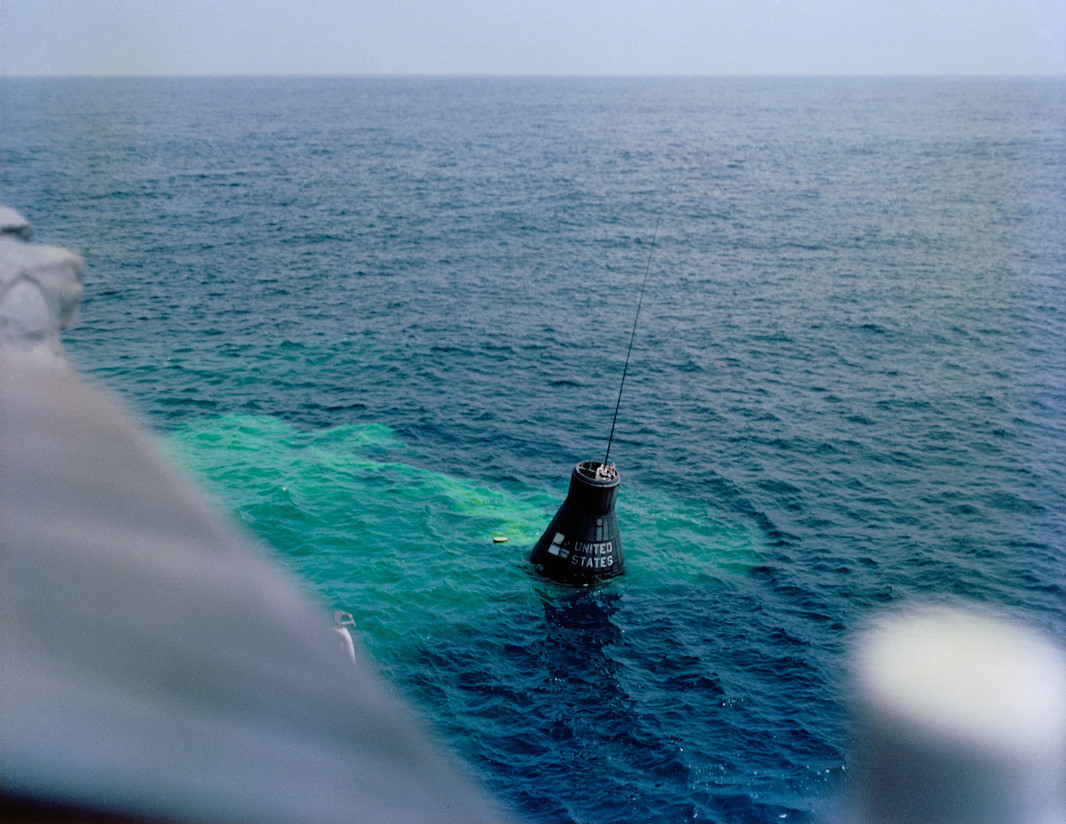
The next American to return from space, Gus Grissom, came close to drowning on 21 July 1961 after splashing down in the Mercury capsule he had dubbed “Liberty Bell 7”. He described the impact as “a good bump” and began disconnecting his oxygen inlet hose, unfastening his helmet and releasing his straps. Luckily, he secured the rubberized neck dam to keep out seawater. It was a decision which would help save Grissom’s life. As he awaited the helicopter to pick up Liberty Bell 7, he suddenly heard the “dull thud” as the hatch inadvertently blew out. He looked up to see blue sky and seawater spilling over the capsule’s hatch sill. Although conditions that day were calm, Mercury capsules were not renowned for their seaworthiness and Liberty Bell 7 quickly started to flood.
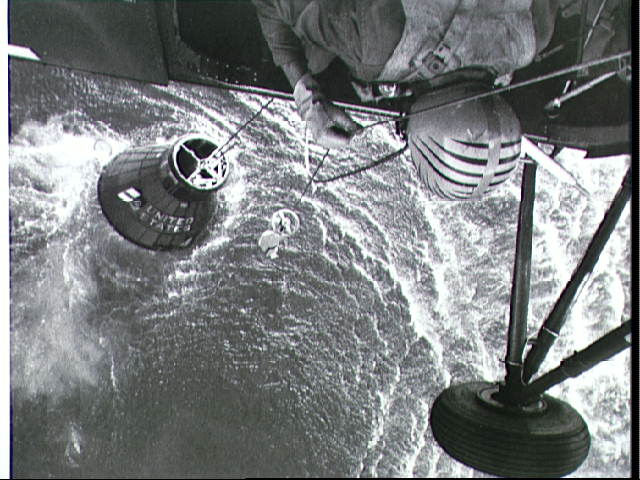
Grissom jumped out of the capsule and begin to swim furiously, but the helicopter crew was momentarily unaware that he was in danger of drowning. At length, as Liberty Bell 7 filled with seawater, reaching a weight in excess of 4,500 pounds (2,000 kg), it became impossible to hoist the capsule to safety and it sank 17,700 feet (5,400 meters) to the Atlantic floor. Not until 2000 was it finally recovered. Grissom did not know that the helicopter crew was struggling with lifting the capsule and, conversely, their training assured that the Mercury pressure suits floated pretty well. Eventually, when he was recovered, Grissom’s first words were a request for a handkerchief to blow his nose, as his head was filled with seawater. Subsequent inquiries found that Grissom played no part in accidentally blowing the hatch, although unpleasant allegations endured for the rest of his life.

On 20 February 1962, America’s first man to orbit Earth—Friendship 7 pilot John Glenn—returned from he jokingly described as “just a normal day in space”. His splashdown had, in fact, been anything but normal, following concerns that his heat shield might be loose. As circumstances transpired, Glenn survived re-entry and splashed down in the Atlantic. Instantly, his attention was drawn to the gurgling of the water outside, as his capsule listed firstly to the left, then to right, and through Friendship 7’s window (still coated with a smoky film from the perilous re-entry) he could see the destroyer Noa close by, her decks crammed with hundreds of sailors.
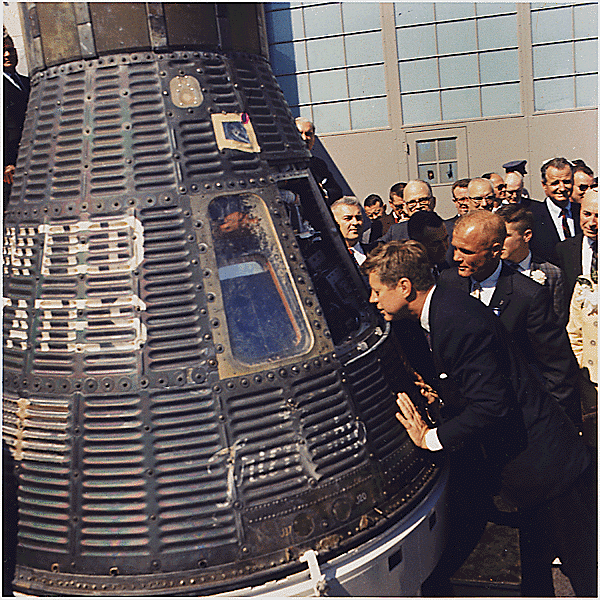
Three months later, on 24 May, Scott Carpenter encountered difficulties almost as soon as he reached orbit. A malfunctioning pitch horizon scanner caused incorrect data to be fed into the automatic control system of his capsule, Aurora 7, which gradually wasted propellant and worsened as the five-hour mission wore on. Shortly before re-entry, it became apparent that the automatic system responsible for controlling retrofire was not working correctly and Carpenter initiated it manually. But he fired the retrorockets three seconds “late”, and coupled with Aurora 7’s nose being canted about 25 degrees off to the right in yaw, produced a significant 250-mile (400 km) overshoot of the predicted recovery zone.
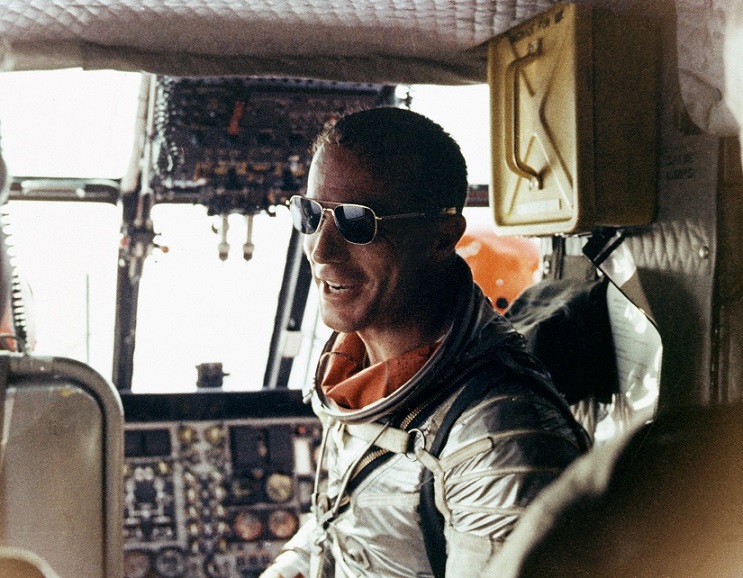
Carpenter endured “some pretty good oscillations” under his capsule’s main canopy during descent and, following splashdown, had to wait for over an hour before the destroyer John R. Pierce could reach him. During that time, there were some tense news reports that the astronaut had died. As he waited, Carpenter tied his life-raft to the side of Aurora 7 and relaxed, stretching out and idly watching as a large black fish popped its head out of the ocean to visit with him. Aboard the Pierce, CBS journalist Bill Evenson noted that “this bucket of bolts is really rolling now, and what a happy crew we’ve got!”
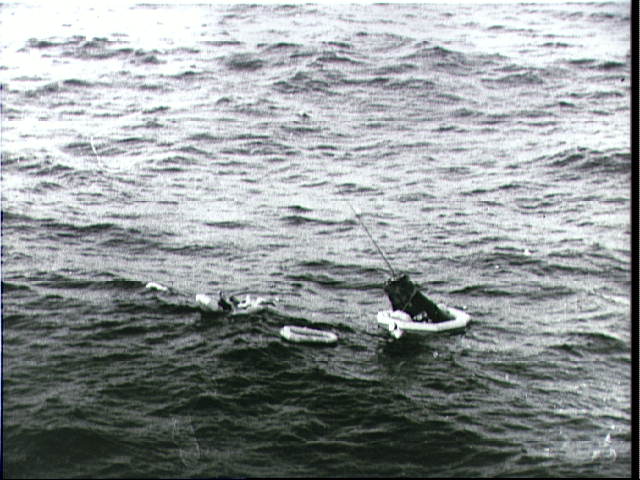
As soon as Carpenter boarded the helicopter, his first act was to borrow someone’s pocket knife. He cut an opening in the sock of his pressure suit and let his sweat and seawater drain out, like a river, through the makeshift toe-hole. He was lucky to have returned alive.
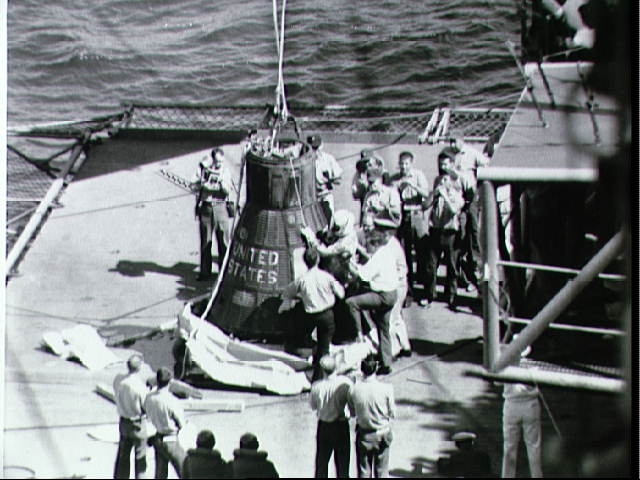
The final two splashdowns of Project Mercury—by Wally Schirra in Sigma 7 on 3 October 1962 and Gordo Cooper in Faith 7 on 16 May 1963—were far calmer than their predecessors. In Schirra’s case, his capsule was “steady as a rock” during re-entry and he deployed the drogue and main parachutes manually, before splashing down a mere 4.5 miles (7.2 km) from the recovery ship, Kearsarge. For the first time, an American manned spacecraft had landed in the Pacific Ocean. Seven months later, Cooper, having suffered problems with his ship’s electrical system whilst in orbit, also performed a manual re-entry, before landing smoothly in the Pacific under decidedly overcast skies.
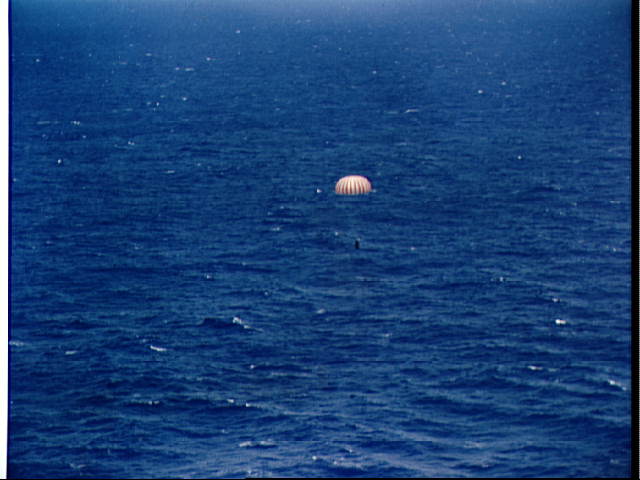
With Project Mercury concluded, ten manned flights of the two-person Gemini spacecraft were performed between March 1965 and November 1966. The first, Gemini 3, piloted by Gus Grissom and John Young, splashed down near Grand Turk Island after a five-hour flight, with the recovery ship still some distance away from them. Grissom—who had earlier been offered a smuggled corned beef sandwich by Young—refused to open the hatch until Navy swimmers reached them, probably keen not to repeat his Liberty Bell 7 experience. (In fact, he had gone so far as to name Gemini 3 as “Molly Brown”, honoring the unsinkable heroine of the Titanic.) Unfortunately, the astronauts admitted that a Gemini was a lousy boat and a seasick Grissom quickly lost his entire breakfast.
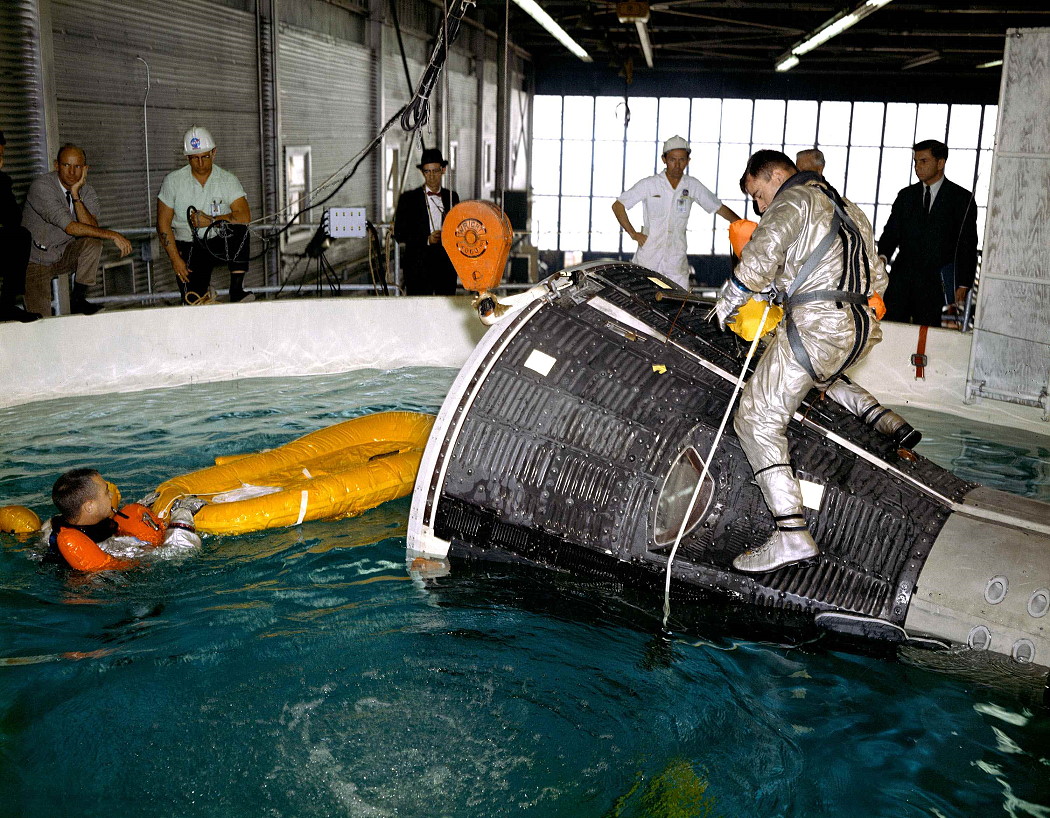
As well as lost breakfasts, as Gemini flights flew for durations of up to 14 days, their returning crews proved pretty undesirable after splashdown. When Gemini IV landed on 7 June 1965 after four days, Jim McDivitt and Ed White were “pretty darn woolly” and in need of a shower. For his part, White wondered what all the fuss was about. “I thought we smelled fine,” he said later. “It was all those people on the carrier that smelled strange!”
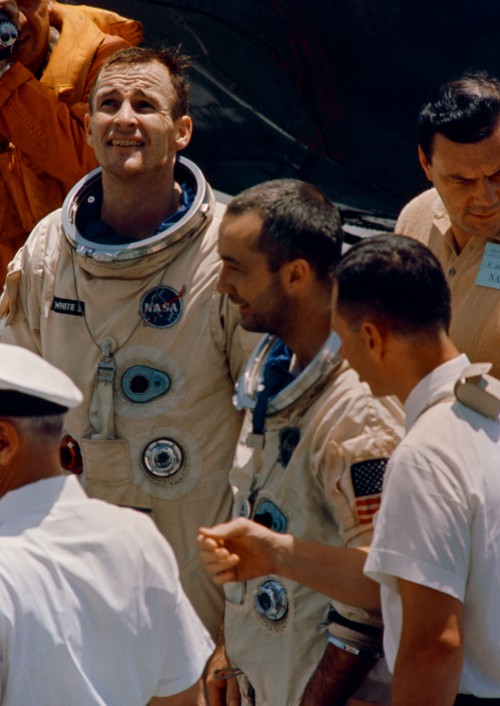
Several further Gemini missions landed without incident, but in March 1966 Neil Armstrong and Dave Scott were tasked with a three-day rendezvous, docking and spacewalking flight which was curtailed after just ten hours. An emergency re-entry was put into effect and Gemini VIII splashed down in the backup landing zone in the Pacific, to be recovered by the naval destroyer Leonard F. Mason, based off the coast of Vietnam. The unfortunate Armstrong and Scott succumbed to both space sickness and seasickness as a result, only later expressing regret at not taking Mission Control’s advice to swallow meclizine motion sickness tablets before re-entry. “When Mission Control told us about three-foot-waves,” Scott wrote in his memoir, Two Sides of the Moon, “they had forgotten to mention the 20-foot swells!”
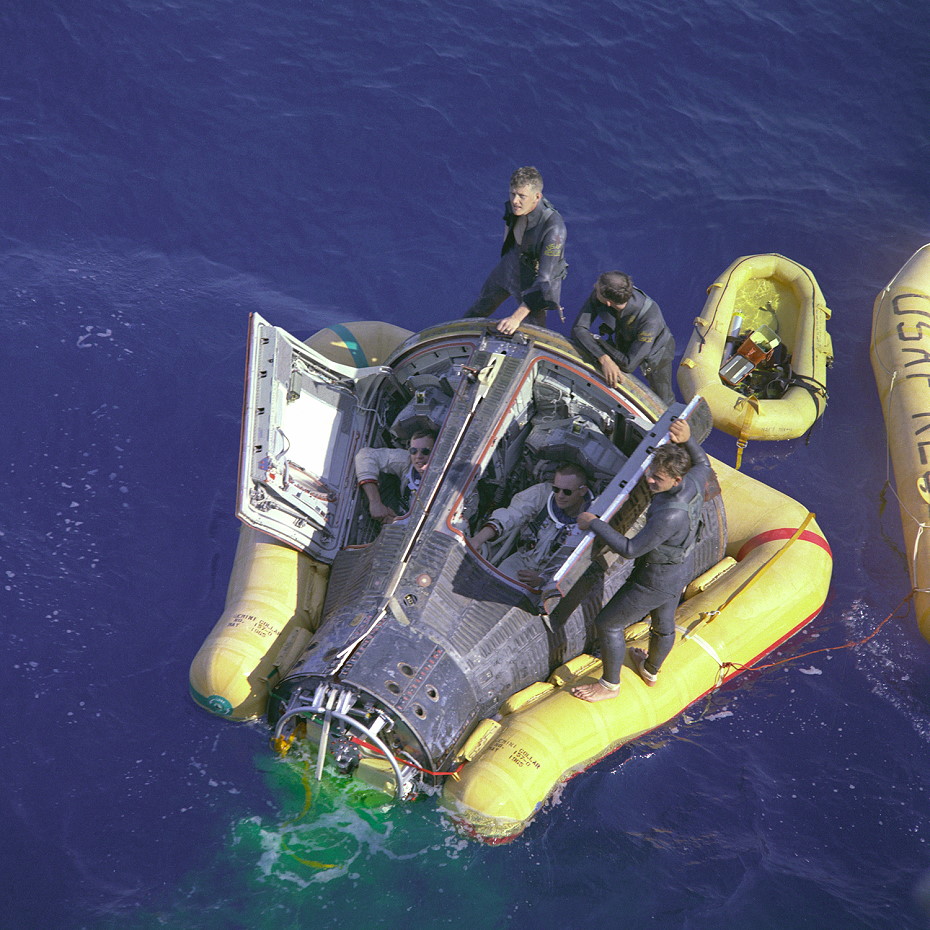
Following the traumatic return of Gemini VIII, the last four Gemini crews splashed down in relatively serene circumstances. In June 1966, Gemini IX-A astronauts Tom Stafford and Gene Cernan hit the water only 2,200 feet (700 meters) from the recovery ship, their only note of concern being a ruptured drinking water line which had spilled its contents into the cabin. In the second part of this article, AmericaSpace will look back at the return of Apollo missions from low-Earth orbit, from lunar distance and from the Skylab space station, which produced some of the hairiest near-misses with disaster ever encountered.
The second part of this article will appear tomorrow.




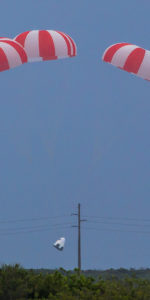
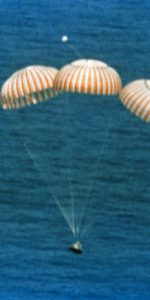
Unfortunately, this is NOT the first water landing since ASTP. It is the first INTENTIONAL water landing.
Let us never forget that the Challenger ended up in the Atlantic shortly after it’s final, fatal launch. All as a result of administrative personnel making engineering decisions, while engineers rarely if ever get to make administrative decisions.